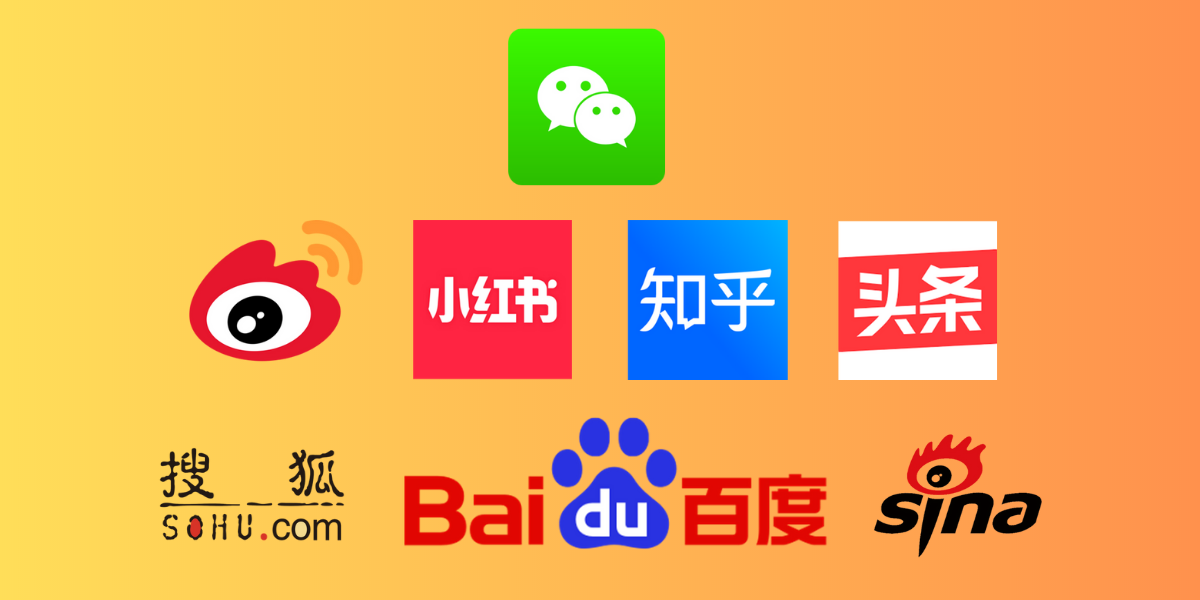Navigating Social Media in China vs. the West: Key Differences You Need to Know
Chinese and Western social media are not just different in terms of their features but also in terms of their user base and government regulation. These unique differences can significantly affect how users and businesses interact with and utilize social media in different contexts. Let’s dive in and discover the nuances that make each platform distinct!
Features
Chinese social media platforms like WeChat, Weibo, and QQ offer a range of features that are not commonly available on Western social media. These features include:
- Payment systems: Chinese social media platforms have integrated payment systems, allowing users to purchase directly within the app.
- Mini-programs: Mini-programs are lightweight apps that can be used within the social media app, providing users with a seamless experience without switching between different apps. The mini-program feature also allows businesses to create their mini-apps within the WeChat ecosystem, providing additional functionality for their customers.
- Group chats: Group chats are very popular in China. Chinese social media platforms have sophisticated group chat features that allow users to chat with multiple people and share multimedia content.
- Live-streaming: Chinese social media platforms also have live-streaming capabilities, allowing users to broadcast live videos to their followers.
In contrast, Western social media platforms like Facebook, Twitter, and Instagram strongly emphasize user-generated content, allowing users to share posts, photos, and videos with their followers. Western social media platforms also have features such as hashtagging, which allows users to tag their posts with relevant keywords, making them more discoverable to others.

User Base

The user base of Chinese social media platforms is primarily located within China, whereas Western social media platforms have a more global reach. For example, WeChat has over 1.2 billion monthly active users, almost all in China. On the other hand, Facebook has over 2.7 billion monthly active users, and they are spread across the world.
One key difference between the user bases of Chinese and Western social media platforms is the age demographic. In China, social media is primarily used by young people, with the majority of users under 30. In contrast, Western social media platforms have a wider age range of users, with a significant portion of users over 30.
Another key difference is the usage pattern of social media. In China, social media is often used as an all-in-one platform where users can communicate with friends, pay bills, shop, and consume news and entertainment content. However, Western social media is more segmented, with users typically using different platforms for different purposes, such as Facebook for communication, Twitter for news, and Instagram for visual content.
Government Regulation
The Chinese government heavily regulates social media platforms within China. This regulation includes censorship of content, monitoring of users, and the requirement for platforms to store user data within China.
The Chinese government has a “Great Firewall” that blocks access to foreign social media platforms like Facebook, Twitter, and Instagram and censors content deemed politically sensitive or harmful to national security. Chinese social media platforms also have to comply with strict content and data storage regulations.
In contrast, Western social media platforms have more freedom in terms of content regulation, but they still need to adhere to local laws and regulations. Western governments tend to have less direct control over social media platforms. However, there have been increasing calls for more regulation of social media, particularly around issues such as hate speech, misinformation, and data privacy.

Social Media Marketing

Chinese social media platforms are particularly effective for social media marketing, especially for businesses targeting the Chinese market because of the advancement of their social media targeting capabilities and the popularity of key opinion leaders (KOLs). KOLs are influencers with large social media followings and are often used by businesses to promote their products or services. Weibo, for example, has a large community of KOLs who have built up a loyal following.
However, Western social media platforms also have strong marketing capabilities, with advanced targeting options and influencer marketing being popular strategies. However, the popularity of KOLs is not as prominent in the West, with influencers often being individuals rather than businesses.
Navigating Social Media in China vs. the West: Key Differences You Need to Know
Chinese and Western social media are not just different in terms of their features but also in terms of their user base and government regulation. These unique differences can significantly affect how users and businesses interact with and utilize social media in different contexts. Let’s dive in and discover the nuances that make each platform distinct!
Features
Chinese social media platforms like WeChat, Weibo, and QQ offer a range of features that are not commonly available on Western social media. These features include:
- Payment systems: Chinese social media platforms have integrated payment systems, allowing users to purchase directly within the app.
- Mini-programs: Mini-programs are lightweight apps that can be used within the social media app, providing users with a seamless experience without switching between different apps. The mini-program feature also allows businesses to create their mini-apps within the WeChat ecosystem, providing additional functionality for their customers.
- Group chats: Group chats are very popular in China. Chinese social media platforms have sophisticated group chat features that allow users to chat with multiple people and share multimedia content.
- Live-streaming: Chinese social media platforms also have live-streaming capabilities, allowing users to broadcast live videos to their followers.
In contrast, Western social media platforms like Facebook, Twitter, and Instagram strongly emphasize user-generated content, allowing users to share posts, photos, and videos with their followers. Western social media platforms also have features such as hashtagging, which allows users to tag their posts with relevant keywords, making them more discoverable to others.

User Base
The user base of Chinese social media platforms is primarily located within China, whereas Western social media platforms have a more global reach. For example, WeChat has over 1.2 billion monthly active users, almost all in China. On the other hand, Facebook has over 2.7 billion monthly active users, and they are spread across the world.
One key difference between the user bases of Chinese and Western social media platforms is the age demographic. In China, social media is primarily used by young people, with the majority of users under 30. In contrast, Western social media platforms have a wider age range of users, with a significant portion of users over 30.
Another key difference is the usage pattern of social media. In China, social media is often used as an all-in-one platform where users can communicate with friends, pay bills, shop, and consume news and entertainment content. However, Western social media is more segmented, with users typically using different platforms for different purposes, such as Facebook for communication, Twitter for news, and Instagram for visual content.

Government Regulation
The Chinese government heavily regulates social media platforms within China. This regulation includes censorship of content, monitoring of users, and the requirement for platforms to store user data within China.
The Chinese government has a “Great Firewall” that blocks access to foreign social media platforms like Facebook, Twitter, and Instagram and censors content deemed politically sensitive or harmful to national security. Chinese social media platforms also have to comply with strict content and data storage regulations.
In contrast, Western social media platforms have more freedom in terms of content regulation, but they still need to adhere to local laws and regulations. Western governments tend to have less direct control over social media platforms. However, there have been increasing calls for more regulation of social media, particularly around issues such as hate speech, misinformation, and data privacy.

Social Media Marketing
Chinese social media platforms are particularly effective for social media marketing, especially for businesses targeting the Chinese market because of the advancement of their social media targeting capabilities and the popularity of key opinion leaders (KOLs). KOLs are influencers with large social media followings and are often used by businesses to promote their products or services. Weibo, for example, has a large community of KOLs who have built up a loyal following.
However, Western social media platforms also have strong marketing capabilities, with advanced targeting options and influencer marketing being popular strategies. However, the popularity of KOLs is not as prominent in the West, with influencers often being individuals rather than businesses.

In summary, Chinese and Western social media platforms have unique differences in terms of their features, user base, government regulation, and social media marketing capabilities. Chinese social media platforms offer payment systems, mini-programs, and advanced group chat features and have a primarily young user base in China. The Chinese government has stricter regulations over social media platforms, including the Great Firewall and content censorship. Chinese social media platforms are highly effective for social media marketing due to their advanced targeting options and the popularity of key opinion leaders. Western social media platforms strongly emphasize user-generated content, a wider age range of users, and less direct government regulation but still offer advanced targeting options and influencer marketing strategies.


